Supplement to InfiniBandTM Architecture Specification Volume 1 Release 1.2.1
Annex A17: RoCEv2
Annex A17: RoCEv2 (IP Routable RoCE)
A17.1 Introduction
A17.2 Overview
A17.2.1 The InfiniBand Architecture
A17.2.2 RDMA over Converged Ethernet (RoCE)
A17.2.3 The Need for (IP) Routable RDMA
A17.2.4 RoCEv2 (IP Routable RoCE)
A17.3 RoCEv2 Packet Format
A17.3.1 Ethertypes and IP Header Fields
A17.3.1.1 RoCEv2 with IPv4
A17.3.1.1.1 Internet Header Length (IHL)
A17.3.1.1.2 Differentiated Services Codepoint (DSCP)
A17.3.1.1.3 Explicit Congestion Notification (ECN)
A17.3.1.1.4 Total Length
A17.3.1.1.5 Flags
A17.3.1.1.6 Fragment Offset
A17.3.1.1.7 Time to Live
A17.3.1.1.8 Protocol
A17.3.1.1.9 Source and Destination IP Addresses
A17.3.1.2 RoCEv2 with IPv6
A17.3.1.2.1 Differentiated Services Codepoint (DSCP)
A17.3.1.2.2 Explicit Congestion Notification (ECN)
A17.3.1.2.3 Payload Length
A17.3.1.2.4 Next Header
A17.3.1.2.5 Hop Limit
A17.3.1.2.6 Source and Destination IP Addresses
A17.3.2 UDP Header Fields
A17.3.2.1 Source Port
A17.3.2.2 Destination Port
A17.3.2.3 Length
A17.3.2.4 Checksum
A17.3.3 ICRC for RoCEv2 Packets
A17.3.4 RoCEv2 Inbound Packet Validation
A17.4 InfiniBand Transport Protocol Spec Considerations
A17.4.1 RoCEv2 Addressing
A17.4.1.1 L3 Addresses
A17.4.1.2 L2 Addresses
A17.4.2 Address Vector
A17.4.3 Port GID Table
A17.4.4 GRH Checks
A17.4.4.1 IP Version
A17.4.4.2 Address Validation Rules
A17.4.5 Unreliable Datagram (UD)
A17.4.5.1 UD Completion Queue Entries (CQEs)
A17.4.5.2 Scattering of the L3 Header in UD
A17.4.6 IB Raw Datagrams
A17.4.7 InfiniBand Partitioning
A17.4.8 InfiniBand Congestion Control
A17.4.9 InfiniBand QOS
A17.5 InfiniBand Verbs Considerations
A17.5.1 QUERY HCA
A17.5.2 MODIFY HCA
A17.5.3 CREATE/MODIFY/QUERY ADDRESS HANDLE
A17.5.4 MODIFY/QUERY QUEUE PAIR / MODIFY/QUERY XRC TARGET QP
A17.5.5 MODIFY/QUERY EE CONTEXT
A17.5.6 ATTACH/DETACH QP TO/FROM MULTICAST GROUP
A17.5.7 POLL FOR COMPLETION
A17.5.8 GET SPECIAL QP
A17.5.9 POST SEND REQUEST
A17.5.10 UNAFFILIATED ASYNCHRONOUS EVENTS
A17.6 InfiniBand Management Considerations
A17.6.1 Communication Management
A17.6.1.1 REQ Message
A17.6.1.2 REJ Message
A17.6.1.3 LAP Message
A17.6.1.4 APR Message
A17.6.1.5 SAP Message
A17.7 Channel Adapters
A17.7.1 Loading The P_KEY Table
A17.7.2 Locally Routed Packets
A17.7.3 Backpressure and Deadlock Prevention
A17.7.4 Inbound Packet Checking
A17.7.5 Support for QP0
A17.8 Interoperability with RoCE Endnodes
A17.9 RoCEv2 Network Considerations
A17.9.1 Lossless Network
A17.9.2 RoCEv2 QoS
A17.9.3 RoCEv2 Congestion Management
A17.9.4 ECMP for RoCEv2
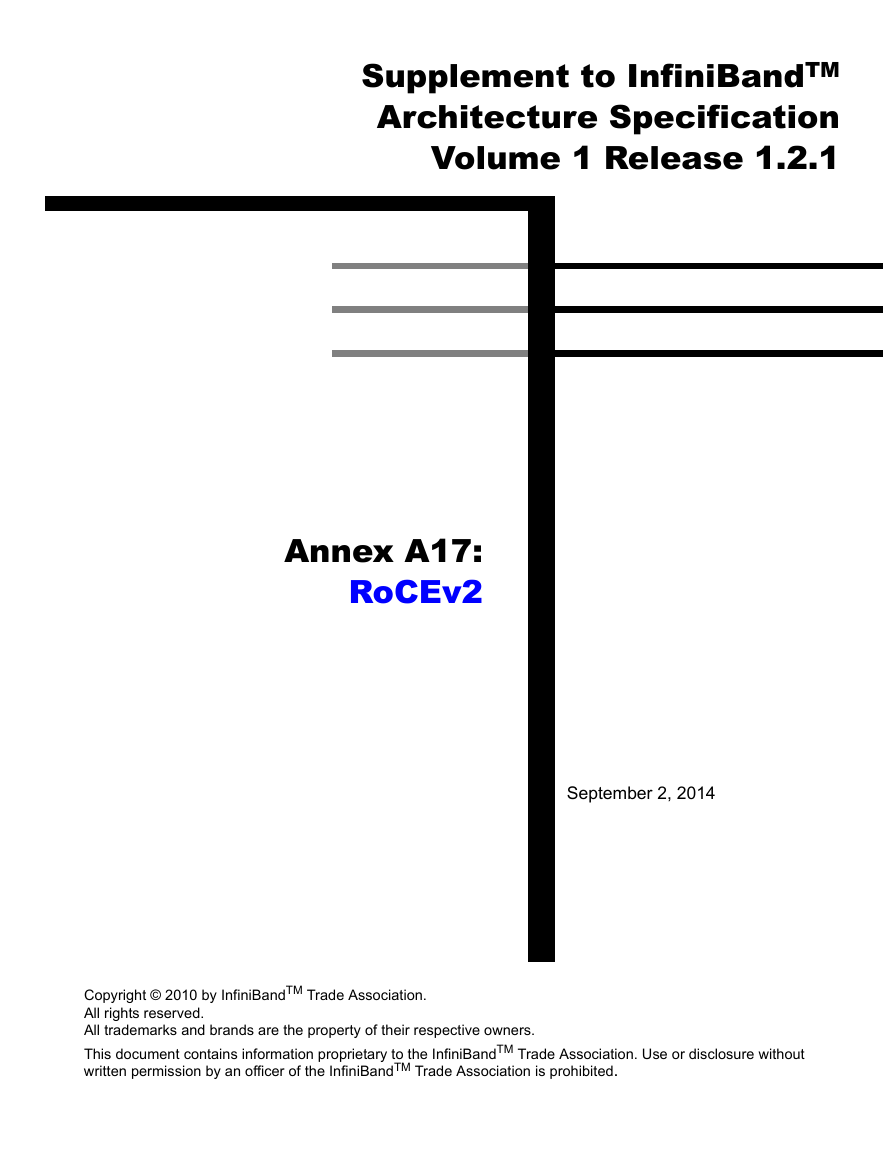
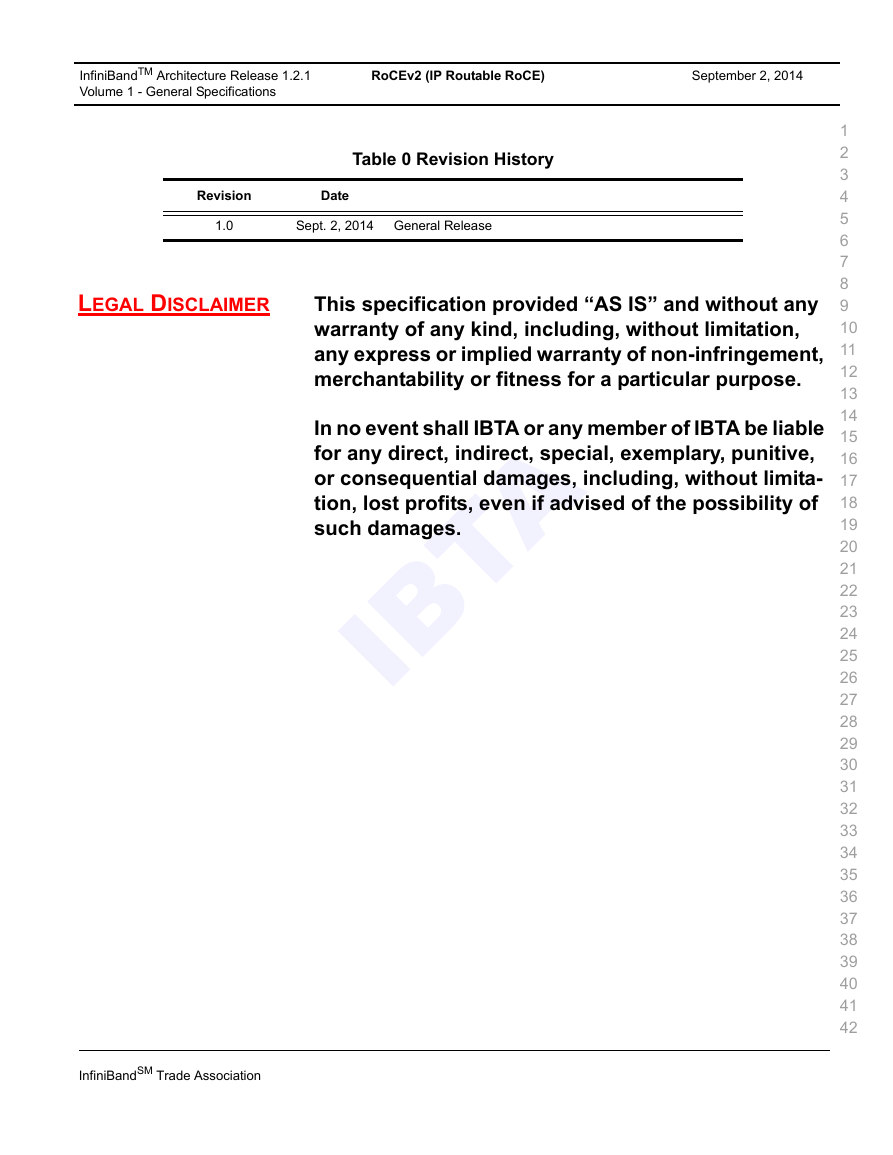
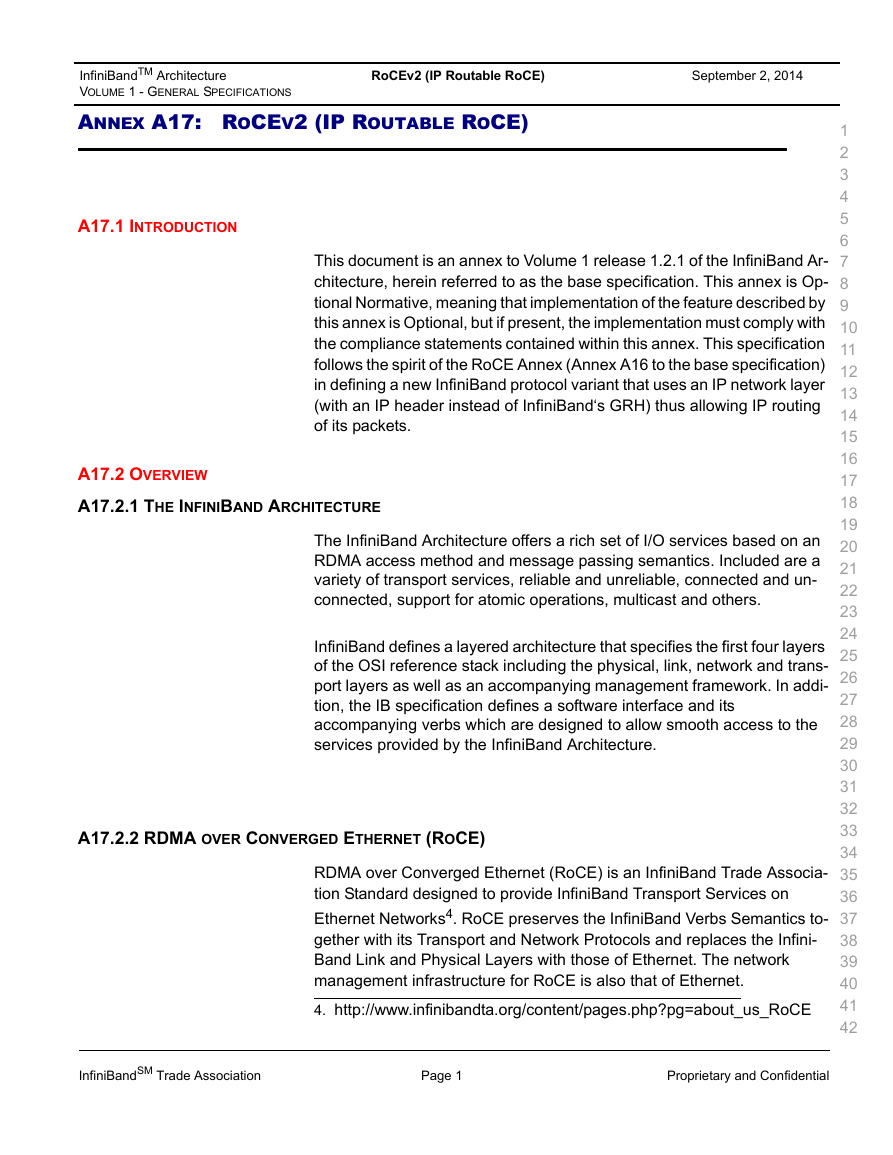
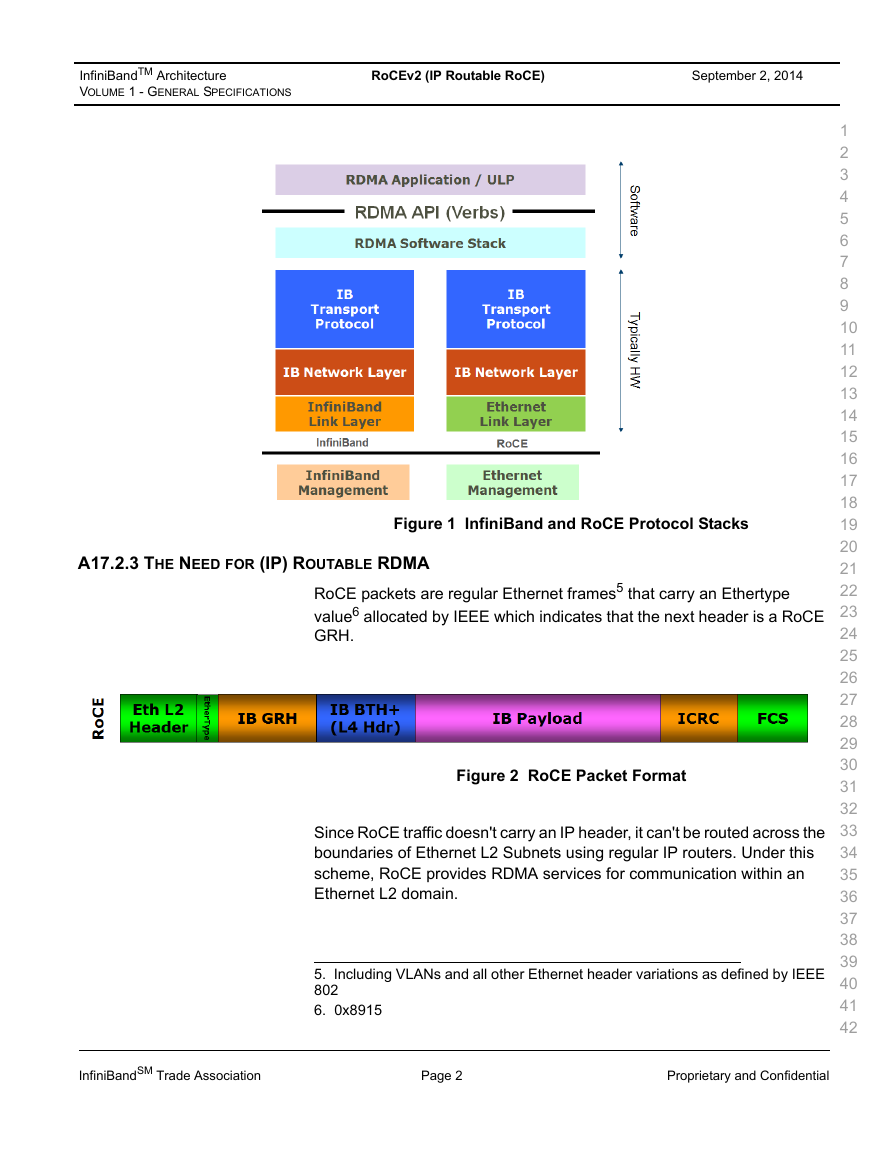

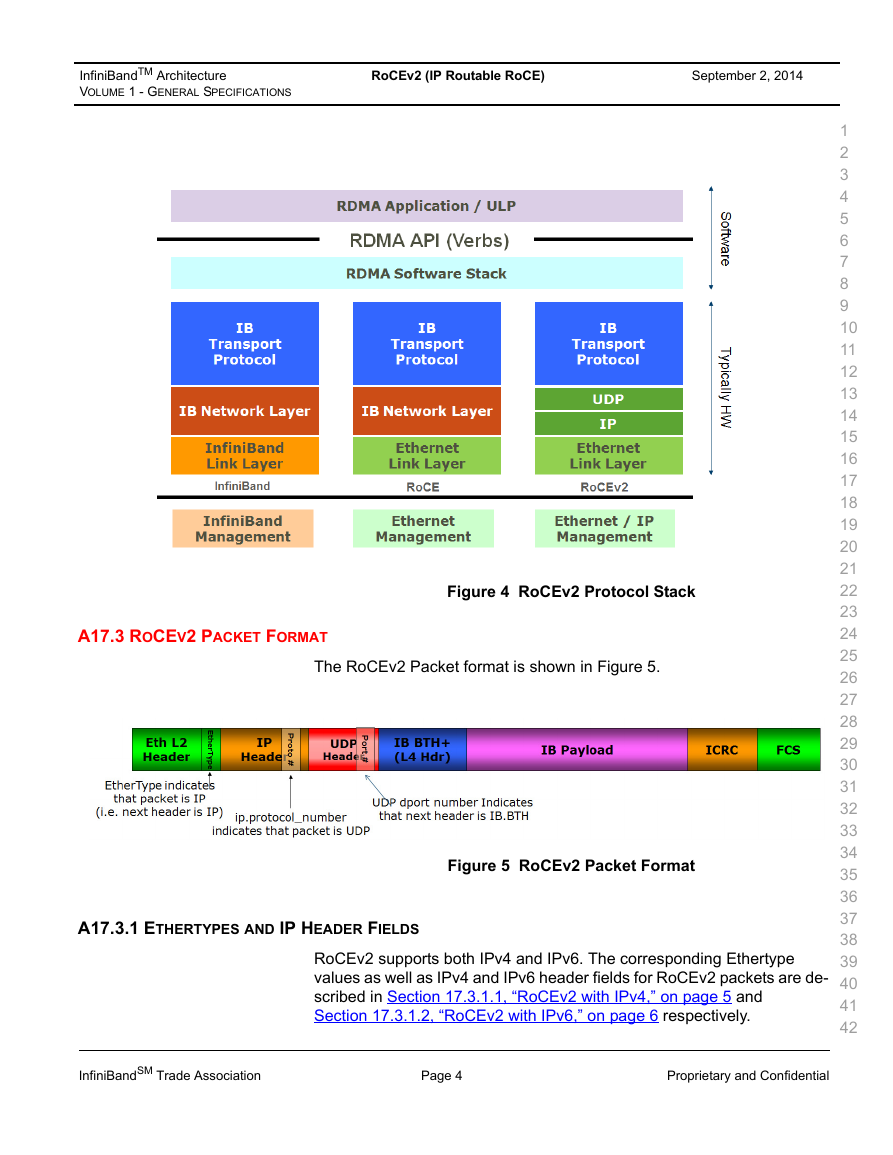
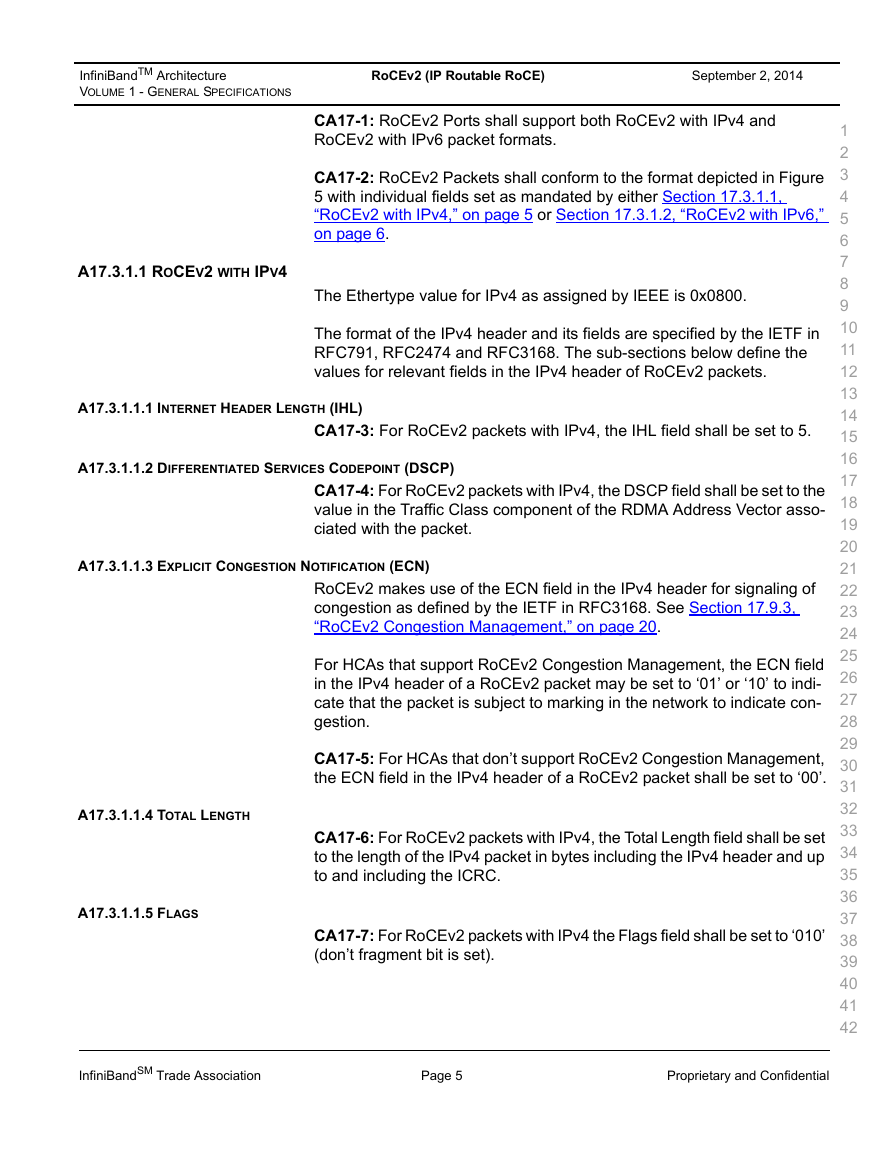
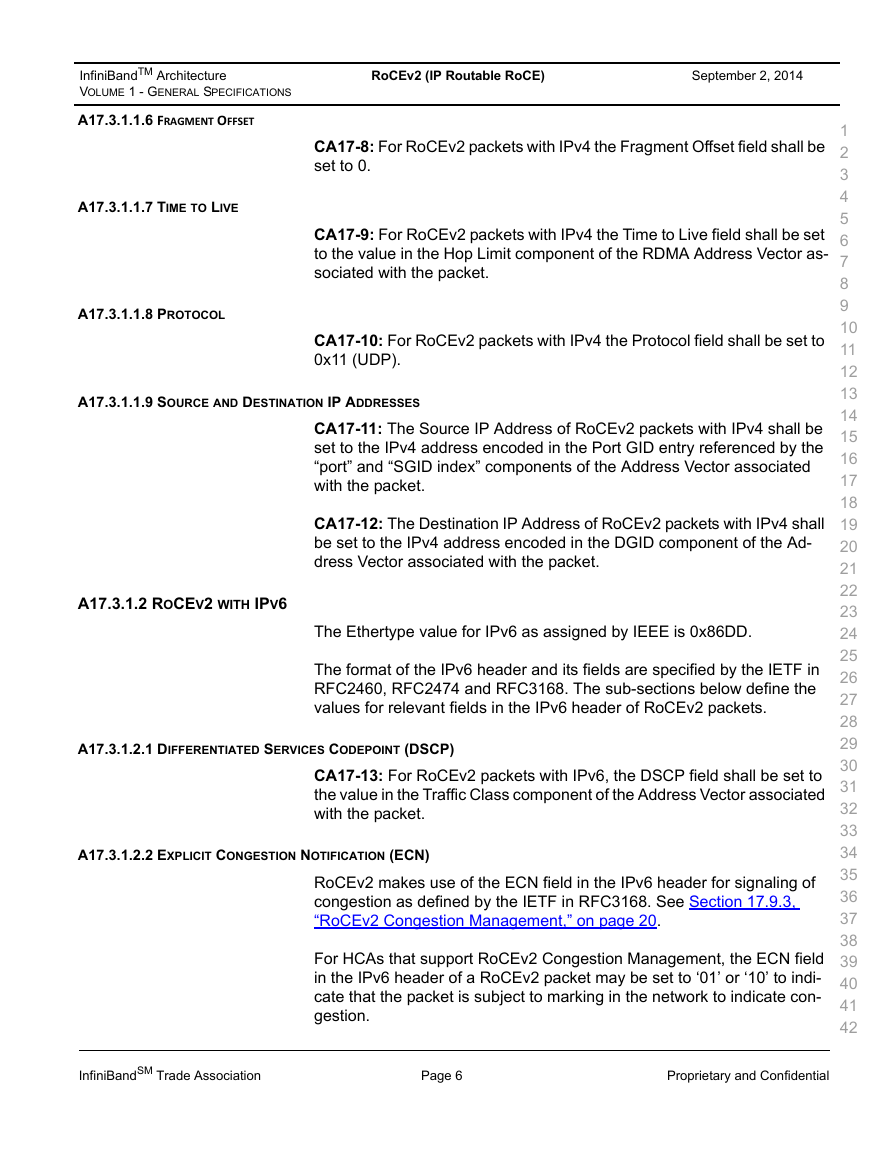








 2023年江西萍乡中考道德与法治真题及答案.doc
2023年江西萍乡中考道德与法治真题及答案.doc 2012年重庆南川中考生物真题及答案.doc
2012年重庆南川中考生物真题及答案.doc 2013年江西师范大学地理学综合及文艺理论基础考研真题.doc
2013年江西师范大学地理学综合及文艺理论基础考研真题.doc 2020年四川甘孜小升初语文真题及答案I卷.doc
2020年四川甘孜小升初语文真题及答案I卷.doc 2020年注册岩土工程师专业基础考试真题及答案.doc
2020年注册岩土工程师专业基础考试真题及答案.doc 2023-2024学年福建省厦门市九年级上学期数学月考试题及答案.doc
2023-2024学年福建省厦门市九年级上学期数学月考试题及答案.doc 2021-2022学年辽宁省沈阳市大东区九年级上学期语文期末试题及答案.doc
2021-2022学年辽宁省沈阳市大东区九年级上学期语文期末试题及答案.doc 2022-2023学年北京东城区初三第一学期物理期末试卷及答案.doc
2022-2023学年北京东城区初三第一学期物理期末试卷及答案.doc 2018上半年江西教师资格初中地理学科知识与教学能力真题及答案.doc
2018上半年江西教师资格初中地理学科知识与教学能力真题及答案.doc 2012年河北国家公务员申论考试真题及答案-省级.doc
2012年河北国家公务员申论考试真题及答案-省级.doc 2020-2021学年江苏省扬州市江都区邵樊片九年级上学期数学第一次质量检测试题及答案.doc
2020-2021学年江苏省扬州市江都区邵樊片九年级上学期数学第一次质量检测试题及答案.doc 2022下半年黑龙江教师资格证中学综合素质真题及答案.doc
2022下半年黑龙江教师资格证中学综合素质真题及答案.doc